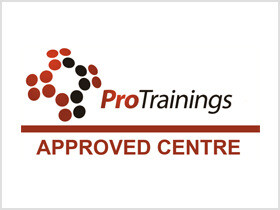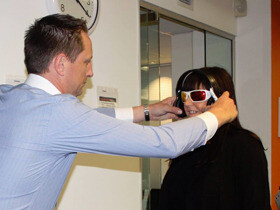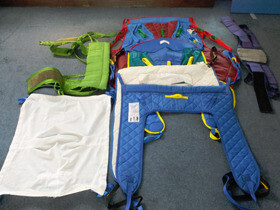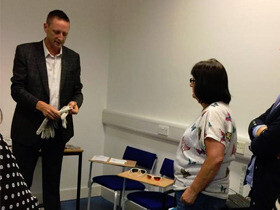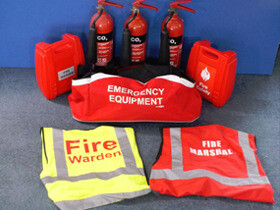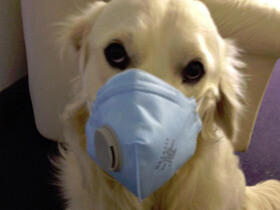The Ofsted requirements for Nannies and Au Pairs state that a minimum 6 hour child care course is required. Childminders, nursery workers and child workers still need the 2 day 12 hour course to meet their requirements. If you are looking at also entering other childcare sectors, then the full 2 day or our blended Paediatric course would be best. This one day course meets the needs of the voluntary part of the Ofsted Childcare Register for Nannies and Au Pairs. This course has to be carried out by an approved ProTrainings instructor over a minimum of 6 contact hours.
The content of this and all our courses has been independently certified as conforming to universally accepted Continuous Professional Development (CPD) guidelines and come with a Certified CPD Statement as well as a ProTrainings Certificate and for online courses an Evidence Based Learning statement.
This course can be completed as the online part 1 of a 2-part blended course. After completing this online course, you may find and attend the classroom-only part 2 courseand cut down on the number of days spent in the classroom.
Paediatric 1 day First Aid for Nannies and Au Pairs click here
This course is also available as a QCF course, meeting the requirements of Ofqual. The employer has the choice of a standard ProTrainings certificate or a QCF certificate. Both are acceptable, have the same content, and meet the same learning outcomes. QCF level courses are usually needed where funding is required. Phone us and we can advise if needed. If you choose the QCF course, there are additional assessment criteria to be done with an instructor and a small extra certification charge.
| QCF Qualification Details | |
|---|---|
| Course Title: | First Aid for Childminders and Home Child Carers |
| QAN: | 500/8028/3 |
| Level: | 2 |
| Credit Value: | 2 |
| GLH: | 10 |
| Product Code: | |
| The Register of Regulated Qualifications | |
| Funding Information | |
Occupations that can use this course:
- Nannies
- Au Pairs
- Parents
- Home Carers
- Child Social Workers
- Grand Parents
Paediatric 1 day First Aid for Nannies and Au Pairs click here
Curriculum:
- Planning for First Aid Emergencies
- Dealing with emergencies
- Activating the emergency services and identifying the need to call the EMS
- First Aid kits and accident reportingUnconscious but breathing (Recovery Position)
- Resuscitation Procedures Appropriate to the Age of the Children being cared forAdult, Infant and Child CPR
- Drowning
- Choking and choking becoming unconscious after choking
- Spinal Injury
- Shock
- Anaphylactic Shock
- Electric Shock
- Serious bleeding and minor bleeding
- Burns and Scalds
- Bites and Stings
- Epilepsy
- Asthma
- Diabetes
Course Aims and Learning Outcomes (Standard and QCF versions)
- After this course the student will have a greater understanding of the possible injuries and illnesses that could affect children and know that gaining immediate professional care is vital to ensure that pain and suffering is reduced as much as possible.
- To introduce basic first aid skills ensuring that the EMS are called and professional medical help gained.
- To learn to be aware of the different accidents and illnesses that involve children
- To get students thinking about possible dangers, therefore reducing the chance of an accident happening
- To ensure all students know the importance of immediate professional care and how to activate it
- Carry out Basic Life Support skills on adults, infants and children and know the differences in these age groups
- Understand childhood illnesses and injuries and how to treat them
Unit 1: Paediatric Emergency First Aid
1 Understand the role of the paediatric first aider
1.1 Identify the responsibilities of a paediatric first aider
1.2 Describe how to minimise the risk of infection to self and others
1.3 Describe suitable first aid equipment, including personal protection, and how it is used appropriately
1.4 Identify what information needs to be included in an accident report/incident record, and how to record it.
1.5 Define an infant and a child for the purposes of first aid treatment
2 Be able to assess an emergency situation and act safely and effectively
2.1 Demonstrate how to conduct a scene survey
2.2 Demonstrate how to conduct a primary survey on an infant and a child
2.3 Identify when and how to call for help
3 Be able to provide first aid for an infant and a child who is unresponsive and breathing normally
3.1 Demonstrate how to place an infant and a child into the appropriate recovery position
3.2 Describe how to continually assess and monitor an infant and a child whilst in your care
4 Be able to provide first aid for an infant and a child who is unresponsive and not breathing normally
4.1 Identify when to administer CPR to an unresponsive infant and an unresponsive child who is not breathing normally
4.2 Demonstrate how to administer CPR using an infant and a child manikin
4.3 Describe how to deal with an infant and a child who is experiencing a seizure
5 Be able to provide first aid for an infant and a child who has a foreign body airway obstruction
5.1 Differentiate between a mild and a severe airway obstruction
5.2 Demonstrate how to treat an infant and a child who is choking
5.3 Describe the procedure to be followed after administering the treatment for choking
6 Be able to provide first aid to an infant and a child who is wounded and bleeding
6.1 Describe common types of wounds
6.2 Describe the types and severity of bleeding and the affect that it has on an infant and a child
6.3 Demonstrate the safe and effective management for the control of minor and major external bleeding
6.4 Describe how to administer first aid for minor injuries
7 Know how to provide first aid to an infant and a child who is suffering from shock
7.1 Describe how to recognise and manage an infant and a child who is suffering from shock
7.2 Describe how to recognise and manage an infant and a child who is suffering from anaphylactic shock
Paediatric 1 day First Aid for Nannies and Au Pairs click here

